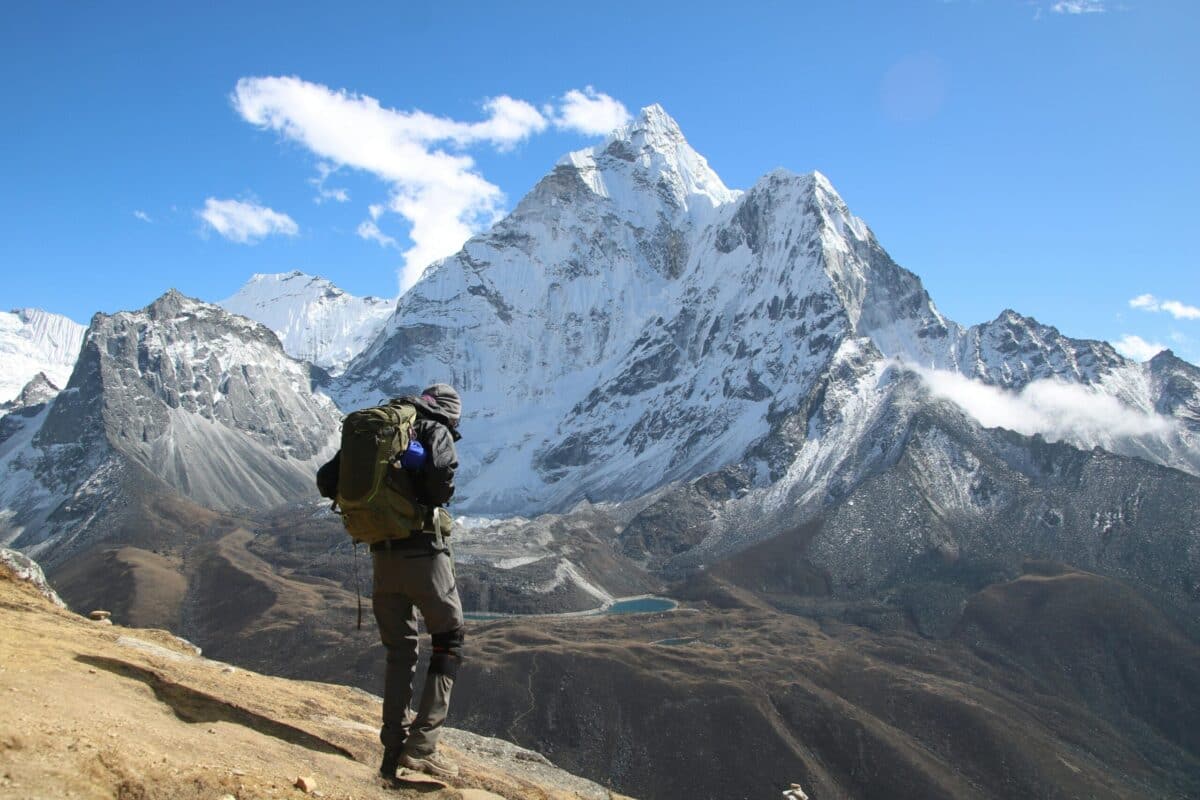For many mountaineers, climbing Mount Everest is the ultimate goal.
Standing at 8,849 meters (29,032 feet), it’s the highest peak in the world and a test of endurance, skill, and preparation. But beyond the physical and technical challenges, there are key factors that many don’t consider before setting their sights on the summit.
Here are five things you need to know before attempting to climb Mount Everest:

1. It’s Incredibly Expensive
Climbing Everest isn’t just physically demanding—it’s also financially demanding. A guided expedition can cost anywhere from $30,000 to $100,000+ depending on the services included. Here’s a breakdown of the major expenses:
- Permits: Nepal requires a climbing permit, which costs $11,000 per person.
- Guides & Sherpas: Hiring experienced guides and Sherpas is essential for safety and costs anywhere from $5,000 to $15,000.
- Equipment & Gear: High-altitude gear, O2 tanks, tents, and food can add up to $8,000 to $15,000.
- Travel & Logistics: Flights to Kathmandu, transportation to Everest Base Camp, and accommodations can cost several thousand dollars.
- Insurance & Emergency Evacuations: You’ll need specialized insurance that covers helicopter evacuations, which can cost upwards of $500 per hour.
If you’re serious about Everest, financial planning is just as important as physical training.
2. It Takes Months (or Years) to Prepare
You can’t just show up and start climbing. Most climbers spend at least a year training before attempting Everest.
Preparation includes:
- High-altitude climbs: Experience on other peaks above 6,000 meters (like Denali, Aconcagua, or Cho Oyu) is highly recommended.
- Strength & endurance training: You need a strong cardiovascular system, leg strength, and overall endurance to handle the climb.
- Acclimatization time: Once on Everest, you’ll spend 6-8 weeks moving between camps, gradually adapting to the altitude before your summit attempt.
If you’re not already an experienced mountaineer, you’ll need to build up years of experience before you’re ready for Everest.
3. The Risks Are Very Real
Climbing Everest is dangerous. Even with modern gear and guided expeditions, about 1% of climbers don’t return.
Some of the risks include:
- Altitude sickness: Severe cases can lead to life-threatening conditions like high-altitude pulmonary edema (HAPE) or high-altitude cerebral edema (HACE).
- Extreme weather: Sudden storms, freezing temperatures, and high winds can turn a summit attempt deadly.
- Crowds & traffic jams: Believe it or not, popular climbing seasons (April-May) see hundreds of climbers attempting the summit at the same time, leading to dangerous delays in the zone above 8,000 meters.
- O2 dependence: Most climbers use supplemental O2, but running out can be fatal.
Understanding these risks and how to manage them is essential before attempting Everest.
4. It’s a Mental Challenge as Much as a Physical One
Many underestimate the mental strain of climbing Everest. The exhaustion, extreme cold, and prolonged time at high altitude take a huge psychological toll.
Challenges include:
- Weeks away from home & comfort: You’ll be living in harsh conditions for almost two months.
- Pushing through exhaustion: Even with the best training, summit day will be the hardest day of your life.
- Making tough decisions: You may have to turn back after months of preparation if conditions become unsafe.
Mental resilience is just as important as physical strength. Climbers who can stay focused, adaptable, and positive have the best chances of reaching the summit.
5. You’ll Need a Strong Support System
No one climbs Everest alone.
Your success depends on an entire team, including:
- Sherpas & guides: Sherpas carry heavy loads, set up ropes, and assist climbers in navigating the route. Their experience is invaluable.
- Teammates: If you’re part of a guided group, you’ll be relying on your teammates for morale and support.
- Medical & logistics teams: Many expeditions include doctors and coordinators to manage safety and emergency responses.
- Your friends & family: The emotional support from home is crucial, especially when facing tough moments on the mountain.
Choosing the right team and support system can make or break your Everest experience.
Final Thoughts
Climbing Mount Everest is an incredible achievement, but it requires careful preparation, financial planning, and mental toughness. If you dream of standing on the highest point on Earth, start by gaining high-altitude experience, training relentlessly, and understanding the full reality of what the climb entails.
Leave a Reply